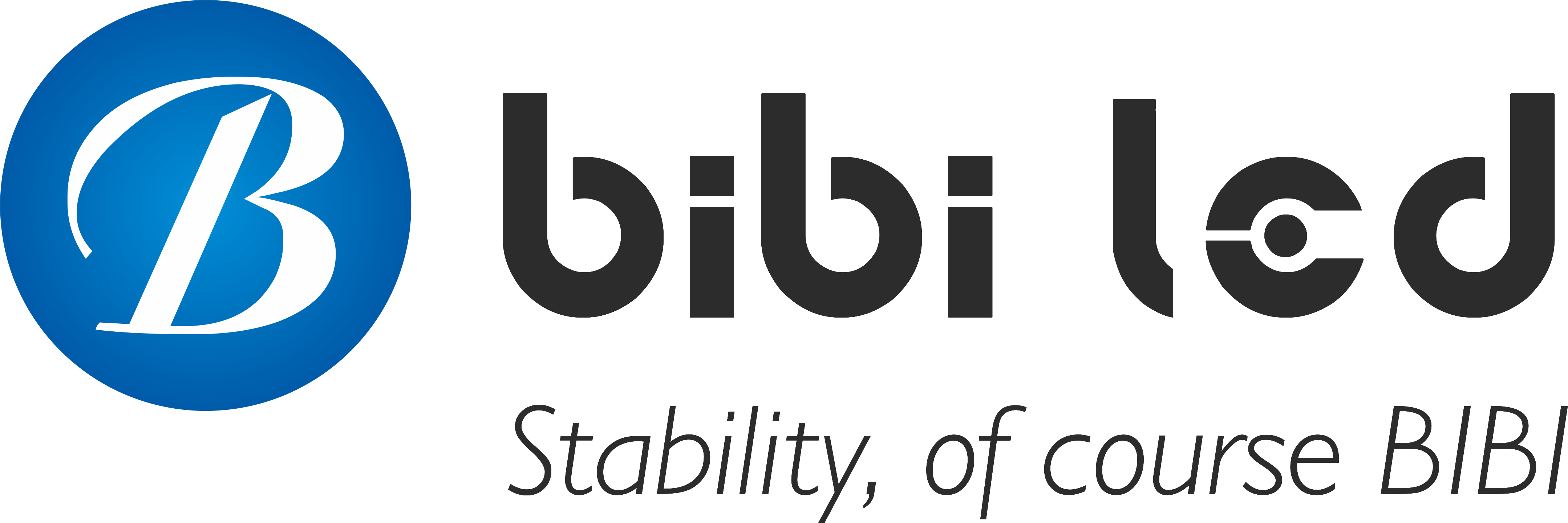介绍
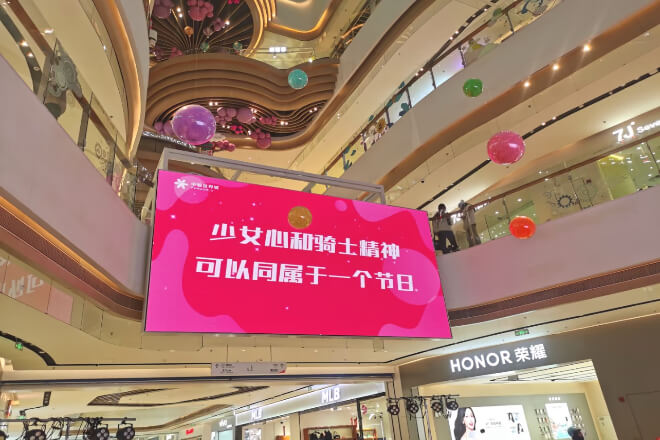
How can an LED屏幕 with a strong visual impact be created under a limited budget? Are large screens and high-definition configurations the only way to attract attention?
In fact, clever design and creative layout can also make your LED screen stand out. The following are some practical, small-budget solutions that may bring you unexpected results.
目录
1. Impact can start with "content design"
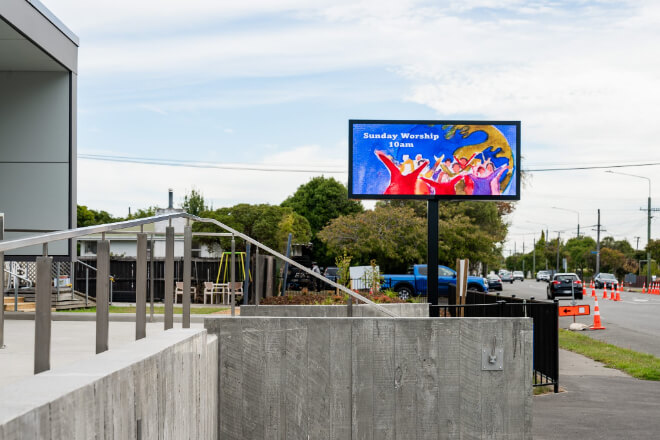
When many people hear about LED screens, their first reaction is “expensive” and “large screens are powerful”.
In fact, visual impact does not depend entirely on how big or expensive the screen is. What really impresses people is the design and expression of the content itself.
A small screen with a limited budget can also make people’s eyes shine.
The LED screen is like a display frame. The key is how you “fill” it. Don’t fill the screen with all the information, which will easily make people dazzled.
The most effective way is to highlight the key points, put the content you want to convey most in the centre or prominent position of the picture, with large and clear fonts, and leave the rest blank to reduce visual burden.
White space is not only empty space, but also a means of creating visual rhythm. Appropriate blank space allows the audience to breathe and avoid information bombardment.
You can also add some small animations or colour blocks to create a rhythm of dynamic and static combinations, making the picture more lively.
In fact, most LED control systems come with templates. Choose a few templates with a clear structure and distinct levels, and replace text and pictures, which is time-saving, labour-saving, and professional.
People naturally like “moving” things, and dynamic pictures are easier to attract attention at first glance than static content.
Especially in scenes where people flow quickly, such as streets, 购物广场, 和 展览, small animations, gradient colours, and flashing text can help you catch the attention of passers-by.
However, static pictures and texts also have advantages. They are suitable for content with rich details that need to be read slowly, such as menus, instructions or price lists.
The best practice is to combine dynamic and static: first use dynamic to attract attention, and then switch to static to convey detailed information.
There are many free or low-cost foreign design tools now, such as Canva, Adobe Express (formerly Adobe Spark), and even PowerPoint, which can easily make simple dynamic effects.
You can quickly make good LED display content without hiring professional designers.
If you want to be more professional, you can also try the free DaVinci Resolve (video editing) or the online animation tool Animaker, which is also very user-friendly.
The thin fonts and fancy fonts on the LED screen are completely unsuitable. They will be blurred when viewed from a distance, affecting the reading experience.
It is recommended to use bold and sans serif fonts, such as black fonts and Microsoft YaHei Bold, which are concise and clear.
In terms of colour matching, it is necessary to pay attention to contrast. Classic colour combinations.
Such as black background and white text, red background and yellow text, are both eye-catching and easy to recognise. Avoid stacking too many colours, which looks messy.
Rhythm is not a complex animation, but the rhythm of the content presentation.
For example, moving for a while and stopping for a while, inserting blank space between text jumps, can make the audience stay for a few more seconds, and the effect is better.
It is recommended to design 1~2 sets of unified fonts and colour templates, which not only guarantees the brand image, but also saves the trouble of designing every time.
2. Not all places need high definition and a small pitch
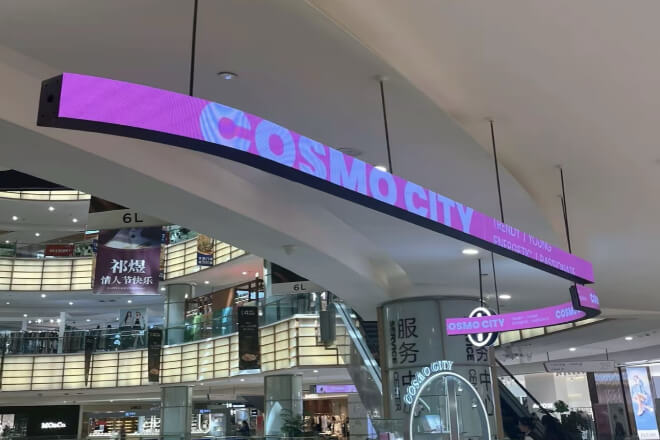
Many people’s first thought when buying LED screens is “the higher the better”, especially when they see small pitch screens such as P1.5 and P2, they feel that they must keep up with the trend.
However, in fact, different viewing distances determine the appropriate screen pixel density. Blindly pursuing ultra-high definition may waste money.
1). Analysis of pixel cost performance at different viewing distances
The dot pitch (i.e. 像素间距) of LED screens is closely related to the viewing distance.
Generally speaking, the farther the viewing distance, the lower the requirement for pixel density.
Close-up viewing (1-3 meters): Suitable for ultra-small pitches such as P1.5 and P2, rich details and delicate pictures.
Medium-distance viewing (3-7 meters): P3 and P4 are very cost-effective choices, with clear pictures and reasonable costs.
Long-distance viewing (more than 7 meters): P5 and above pixel pitches can meet the needs, and the price is more economical.
Many outdoor advertisements, shopping mall atriums, and lobby background walls do not require high precision, such as P1.5. P4 and P5 are more practical and budget-friendly.
2). “Over-configuration trap” that users with small budgets should avoid
For users with limited budgets, avoid blindly pursuing the highest-definition parameters; otherwise, the money will not be spent.
Over-configuration not only increases procurement costs but may also lead to complex installation and increased maintenance costs.
Only by rationally judging your viewing distance and usage scenarios and choosing the appropriate dot pitch can you get a return on your money.
In short, don’t pay for “high definition”, but pay for “clear and comfortable viewing”.
3. Visual tension can be formed by combining lighting and structure
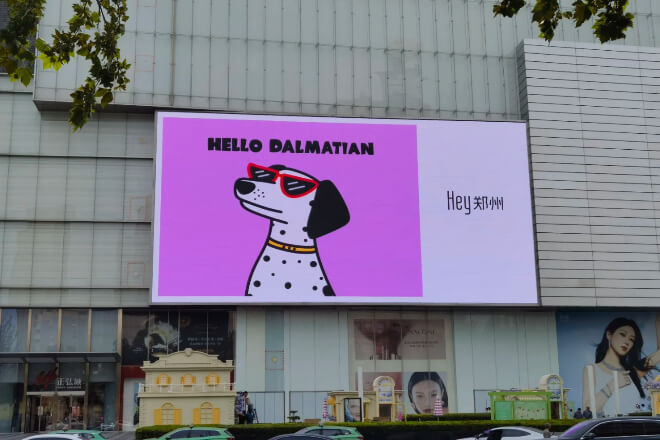
If you want the LED display to be not only “bright” but also layered and attractive, it is not enough to rely on the screen itself.
With the right lighting and surrounding wall and ground structures, the picture of the LED display will immediately become “pulsating”, with a stronger sense of space, and the overall visual impact will naturally be more obvious.
For example, add a circle of soft light strips to the edge of the LED display, and the light will not rigidly cut the picture, but will naturally blend with the environment.
Use a few spotlights to create some shadows, and with the dynamic effects on the screen.
The three-dimensional sense of the picture will immediately increase, and the audience can’t help but stare at it for a few more seconds.
The wall cannot be ignored. Installing the LED display on a textured or geometric wall can make the picture feel “stretched” outward, without the flat feeling of being ordinary.
The reflection or pattern on the ground echoes the content on the screen, which can create a sense of space that is linked up and down, and the atmosphere is immediately improved.
If you don’t want to use an ordinary rectangular screen, you can be creative, such as a curved LED display, folded surface splicing.
Or a combination of multiple small screens, which can make the screen “look bigger” and more powerful.
Decorating the wall to extend the screen boundary can also create an illusion of visual magnification and give people a shocking sense of the scene.
In short, once the lighting and structure are matched, the LED display will come alive immediately. It is not only bright but also the most eye-catching visual focus in the venue.
4. Small area splicing + content linkage can also be very shocking

Many people think that only large screens can bring shock, but in fact, small area LED display splicing plus clever content linkage can also create a strong sense of visual rhythm, and the effect is equally amazing.
By splitting the screen, distributing multiple small screens in different positions, and then creating a combination of static and dynamic and rhythm changes through content linkage.
The audience’s eyes can wander back and forth in the space, forming a visual impact and avoiding the dull feeling of “flat and straightforward” of a single large screen.
Compared with relying on only one large screen, the advantage of small-area multi-screen interaction is that it is more flexible and can be flexibly arranged according to on-site needs, increasing fun and participation.
For example, at an exhibition, several small screens are distributed in different corners of the booth.
And the content is played synchronously or staggered, which can attract the audience to stay longer and enhance the interactive experience.
In the store, small-area spliced LED display screens can also be used in conjunction with lighting and product display to create dynamic shopping guides or atmosphere, enhancing the overall sense of space and brand tone.
Flash events often use multiple small screens to splice and combine creative content linkage with the on-site environment, which not only saves costs but also is more innovative and attractive.
These cases tell us that the size of the screen is not so absolute. A small area can still create a big scene by cleverly using splicing and linkage.
5. 结论
A small budget does not mean sacrificing visual effects. Through clever content design, reasonable screen configuration and creative lighting matching, your LED screen can also become the focus.
Don’t let the budget limit your imagination; try these methods to make the LED screen the highlight of your space!
最后,如果您想了解更多关于LED显示屏的知识, 请与我们联系.
